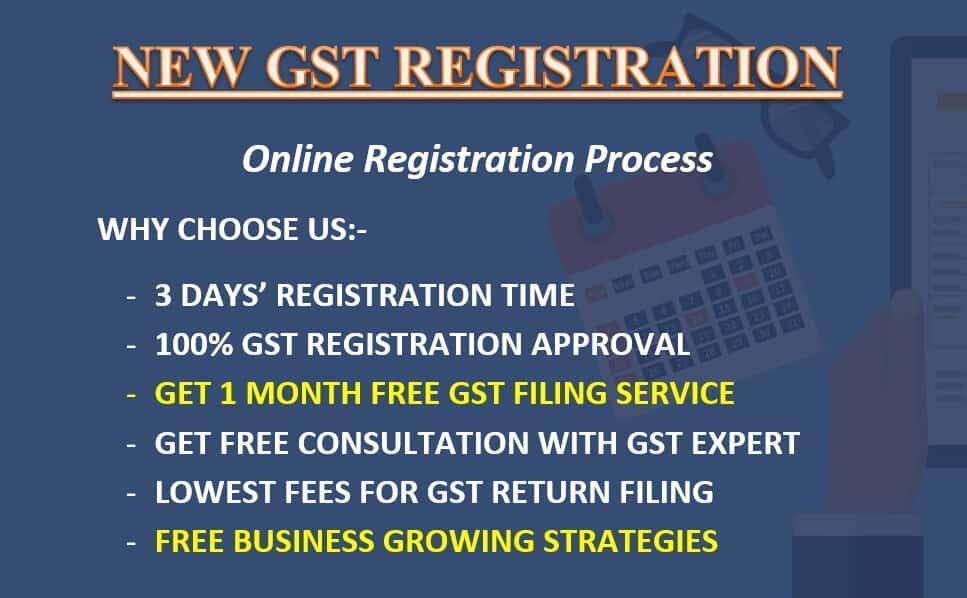Grasping GST Registration: Important Steps to Ensure Regulative Compliance and Service Growth
Browsing the world of Goods and Services Tax Obligation (GST) enrollment can be a critical step for services intending to maintain conformity and foster development. The elaborate procedure of signing up for GST demands a keen understanding of the vital actions involved, from comprehending the fundamental concepts of GST to meticulously preparing the called for documents. Beyond just ticking off the regulative checkboxes, mastering GST registration opens up a realm of opportunities for organizations to tactically leverage this tax obligation structure to push their development. Understanding the subtleties of GST enrollment is not merely a governmental necessity but a strategic step that can form the trajectory of a business in the direction of sustainable success.
Comprehending GST Basics
Recognizing the basics of Item and Solutions Tax Obligation (GST) is important for companies to navigate the complexities of tax compliance and monetary management properly. GST is a value-added tax levied on the supply of products and solutions in India, intending to produce a unified tax system across the country. Singapore GST Registration. Under GST, organizations need to sign up and acquire an unique GSTIN (Product and Services Tax Obligation Identification Number) to be certified with the legislation

Readying Necessary Documents
To ensure conformity with GST registration demands, organizations have to collect and organize the required documents for the application process effectively. The vital documents generally required for GST registration consist of proof of company enrollment or incorporation, PAN card of the address, organization and identity evidence of marketers, photographs, financial institution declarations, and proof of address of the workplace. Additionally, companies might need to offer details of accredited signatures, service tasks, and turnover. It is vital to make certain that all papers are precise, as much as day, and satisfy the requirements specified by the tax authorities to stay clear of delays or rejections in the registration process.
Organizing these records in an organized fashion can enhance the application process and show business's dedication to governing conformity. Services must maintain both digital and physical copies of these files for simple gain access to and reference. By preparing the necessary records diligently, organizations can accelerate their GST registration process and concentrate on their core operations with the assurance of governing compliance.
Online Enrollment Refine
Start the GST enrollment process by navigating to the main online portal marked for organization registration. Once the account is established up, you can proceed with filling up out the GST registration application type by getting in the necessary business info, consisting of company type, address, and turnover details.

Conformity and Reporting Obligations
Upon effective enrollment on the GSTN site and conclusion of the necessary documentation, companies should follow rigid conformity and reporting responsibilities find out here to guarantee regulatory adherence and functional transparency. Conformity demands under GST required exact and prompt declaring of numerous returns, such as GSTR-1 for exterior materials, GSTR-3B for monthly recap returns, and yearly returns like GSTR-9. In addition, services need to resolve their sales and purchase data through GSTR-2A and GSTR-2B to claim input tax credit histories properly.
Preserving proper documents of billings, accounting papers, and other pertinent information is important for GST conformity. Routine audits and assessments by tax authorities require organizations to have careful documentation and reporting systems in location. Any kind of discrepancies or non-compliance can lead to penalties, penalties, and even suspension of GST registration.
To improve conformity processes, businesses can utilize GST conformity software application that automates return filing, compliance, and reconciliation monitoring. Remaining upgraded with governing modifications and looking for expert recommendations when required can better boost compliance initiatives and make certain smooth procedures within the GST that site structure.
Leveraging GST for Business Growth
One vital advantage of GST is the input tax credit scores system, which allows organizations to declare credit scores for tax obligations paid on inputs. Furthermore, GST promotes transparency and responsibility in the tax obligation system, which can help organizations construct trust with companions and clients.
Furthermore, GST enrollment can also open up brand-new markets for organizations. In essence, leveraging GST for business growth entails critical planning, reliable conformity, and a positive approach to economic administration.
Verdict
To conclude, understanding GST registration is vital for making sure governing conformity and assisting in business development. By comprehending the fundamentals of GST, preparing required records, finishing the on-line enrollment procedure, and satisfying compliance and reporting obligations, businesses can utilize GST to their advantage. It is necessary for organizations to comply with the policies and use GST as a device for increasing their procedures and remaining competitive on the market.
Browsing the realm of Item and Solutions Tax (GST) registration can be a crucial action top article for businesses intending to maintain conformity and foster growth. The essential records commonly needed for GST registration include evidence of service registration or unification, Frying pan card of the address, business and identity evidence of promoters, pictures, financial institution statements, and evidence of address of the place of service.Start the GST registration procedure by navigating to the official online site marked for company enrollment. When the account is set up, you can proceed with loading out the GST registration application form by getting in the required company info, consisting of organization turnover, address, and type information.
By recognizing the essentials of GST, preparing required papers, completing the online enrollment process, and meeting conformity and reporting obligations, organizations can take advantage of GST to their benefit.